Cong Chen
Behavioral Generative Agents for Energy Operations
Jun 14, 2025Abstract:Accurately modeling consumer behavior in energy operations remains challenging due to inherent uncertainties, behavioral complexities, and limited empirical data. This paper introduces a novel approach leveraging generative agents--artificial agents powered by large language models--to realistically simulate customer decision-making in dynamic energy operations. We demonstrate that these agents behave more optimally and rationally in simpler market scenarios, while their performance becomes more variable and suboptimal as task complexity rises. Furthermore, the agents exhibit heterogeneous customer preferences, consistently maintaining distinct, persona-driven reasoning patterns. Our findings highlight the potential value of integrating generative agents into energy management simulations to improve the design and effectiveness of energy policies and incentive programs.
PerturboLLaVA: Reducing Multimodal Hallucinations with Perturbative Visual Training
Mar 09, 2025Abstract:This paper aims to address the challenge of hallucinations in Multimodal Large Language Models (MLLMs) particularly for dense image captioning tasks. To tackle the challenge, we identify the current lack of a metric that finely measures the caption quality in concept level. We hereby introduce HalFscore, a novel metric built upon the language graph and is designed to evaluate both the accuracy and completeness of dense captions at a granular level. Additionally, we identify the root cause of hallucination as the model's over-reliance on its language prior. To address this, we propose PerturboLLaVA, which reduces the model's reliance on the language prior by incorporating adversarially perturbed text during training. This method enhances the model's focus on visual inputs, effectively reducing hallucinations and producing accurate, image-grounded descriptions without incurring additional computational overhead. PerturboLLaVA significantly improves the fidelity of generated captions, outperforming existing approaches in handling multimodal hallucinations and achieving improved performance across general multimodal benchmarks.
Every FLOP Counts: Scaling a 300B Mixture-of-Experts LING LLM without Premium GPUs
Mar 07, 2025



Abstract:In this technical report, we tackle the challenges of training large-scale Mixture of Experts (MoE) models, focusing on overcoming cost inefficiency and resource limitations prevalent in such systems. To address these issues, we present two differently sized MoE large language models (LLMs), namely Ling-Lite and Ling-Plus (referred to as "Bailing" in Chinese, spelled B\v{a}il\'ing in Pinyin). Ling-Lite contains 16.8 billion parameters with 2.75 billion activated parameters, while Ling-Plus boasts 290 billion parameters with 28.8 billion activated parameters. Both models exhibit comparable performance to leading industry benchmarks. This report offers actionable insights to improve the efficiency and accessibility of AI development in resource-constrained settings, promoting more scalable and sustainable technologies. Specifically, to reduce training costs for large-scale MoE models, we propose innovative methods for (1) optimization of model architecture and training processes, (2) refinement of training anomaly handling, and (3) enhancement of model evaluation efficiency. Additionally, leveraging high-quality data generated from knowledge graphs, our models demonstrate superior capabilities in tool use compared to other models. Ultimately, our experimental findings demonstrate that a 300B MoE LLM can be effectively trained on lower-performance devices while achieving comparable performance to models of a similar scale, including dense and MoE models. Compared to high-performance devices, utilizing a lower-specification hardware system during the pre-training phase demonstrates significant cost savings, reducing computing costs by approximately 20%. The models can be accessed at https://huggingface.co/inclusionAI.
Uncertainty Quantification for Collaborative Object Detection Under Adversarial Attacks
Feb 04, 2025



Abstract:Collaborative Object Detection (COD) and collaborative perception can integrate data or features from various entities, and improve object detection accuracy compared with individual perception. However, adversarial attacks pose a potential threat to the deep learning COD models, and introduce high output uncertainty. With unknown attack models, it becomes even more challenging to improve COD resiliency and quantify the output uncertainty for highly dynamic perception scenes such as autonomous vehicles. In this study, we propose the Trusted Uncertainty Quantification in Collaborative Perception framework (TUQCP). TUQCP leverages both adversarial training and uncertainty quantification techniques to enhance the adversarial robustness of existing COD models. More specifically, TUQCP first adds perturbations to the shared information of randomly selected agents during object detection collaboration by adversarial training. TUQCP then alleviates the impacts of adversarial attacks by providing output uncertainty estimation through learning-based module and uncertainty calibration through conformal prediction. Our framework works for early and intermediate collaboration COD models and single-agent object detection models. We evaluate TUQCP on V2X-Sim, a comprehensive collaborative perception dataset for autonomous driving, and demonstrate a 80.41% improvement in object detection accuracy compared to the baselines under the same adversarial attacks. TUQCP demonstrates the importance of uncertainty quantification to COD under adversarial attacks.
Efficient Dynamic Attributed Graph Generation
Dec 11, 2024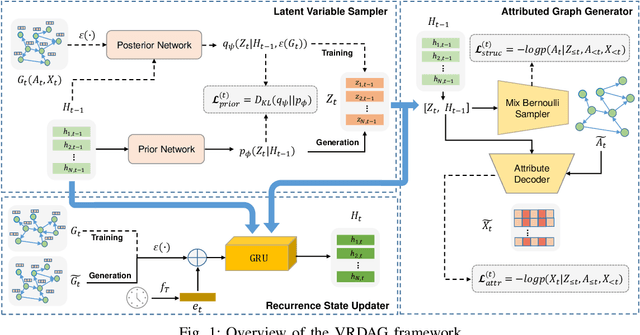
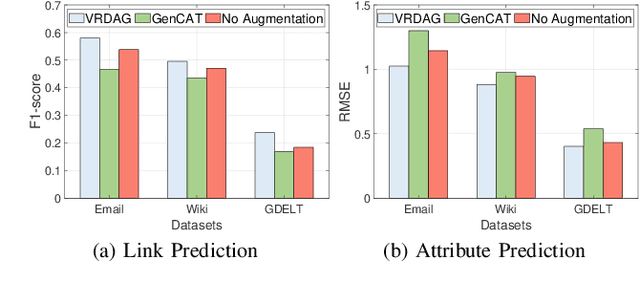
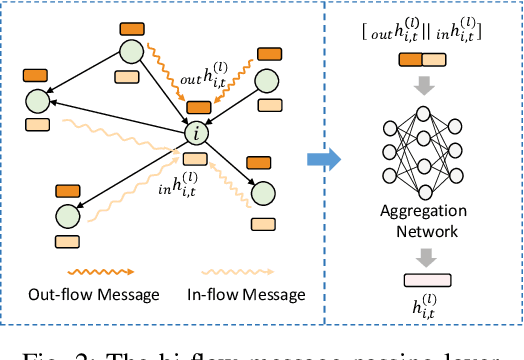
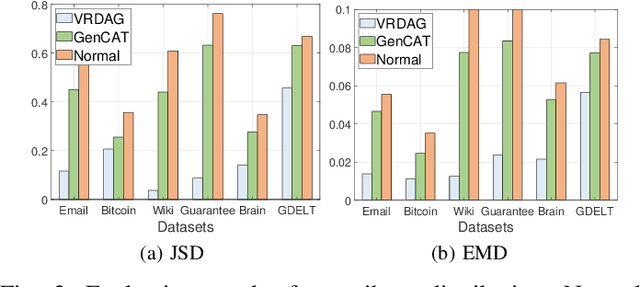
Abstract:Data generation is a fundamental research problem in data management due to its diverse use cases, ranging from testing database engines to data-specific applications. However, real-world entities often involve complex interactions that cannot be effectively modeled by traditional tabular data. Therefore, graph data generation has attracted increasing attention recently. Although various graph generators have been proposed in the literature, there are three limitations: i) They cannot capture the co-evolution pattern of graph structure and node attributes. ii) Few of them consider edge direction, leading to substantial information loss. iii) Current state-of-the-art dynamic graph generators are based on the temporal random walk, making the simulation process time-consuming. To fill the research gap, we introduce VRDAG, a novel variational recurrent framework for efficient dynamic attributed graph generation. Specifically, we design a bidirectional message-passing mechanism to encode both directed structural knowledge and attribute information of a snapshot. Then, the temporal dependency in the graph sequence is captured by a recurrence state updater, generating embeddings that can preserve the evolution pattern of early graphs. Based on the hidden node embeddings, a conditional variational Bayesian method is developed to sample latent random variables at the neighboring timestep for new snapshot generation. The proposed generation paradigm avoids the time-consuming path sampling and merging process in existing random walk-based methods, significantly reducing the synthesis time. Finally, comprehensive experiments on real-world datasets are conducted to demonstrate the effectiveness and efficiency of the proposed model.
The Music Maestro or The Musically Challenged, A Massive Music Evaluation Benchmark for Large Language Models
Jun 22, 2024



Abstract:Benchmark plays a pivotal role in assessing the advancements of large language models (LLMs). While numerous benchmarks have been proposed to evaluate LLMs' capabilities, there is a notable absence of a dedicated benchmark for assessing their musical abilities. To address this gap, we present ZIQI-Eval, a comprehensive and large-scale music benchmark specifically designed to evaluate the music-related capabilities of LLMs. ZIQI-Eval encompasses a wide range of questions, covering 10 major categories and 56 subcategories, resulting in over 14,000 meticulously curated data entries. By leveraging ZIQI-Eval, we conduct a comprehensive evaluation over 16 LLMs to evaluate and analyze LLMs' performance in the domain of music. Results indicate that all LLMs perform poorly on the ZIQI-Eval benchmark, suggesting significant room for improvement in their musical capabilities. With ZIQI-Eval, we aim to provide a standardized and robust evaluation framework that facilitates a comprehensive assessment of LLMs' music-related abilities. The dataset is available at GitHub\footnote{https://github.com/zcli-charlie/ZIQI-Eval} and HuggingFace\footnote{https://huggingface.co/datasets/MYTH-Lab/ZIQI-Eval}.
The STOIC2021 COVID-19 AI challenge: applying reusable training methodologies to private data
Jun 25, 2023Abstract:Challenges drive the state-of-the-art of automated medical image analysis. The quantity of public training data that they provide can limit the performance of their solutions. Public access to the training methodology for these solutions remains absent. This study implements the Type Three (T3) challenge format, which allows for training solutions on private data and guarantees reusable training methodologies. With T3, challenge organizers train a codebase provided by the participants on sequestered training data. T3 was implemented in the STOIC2021 challenge, with the goal of predicting from a computed tomography (CT) scan whether subjects had a severe COVID-19 infection, defined as intubation or death within one month. STOIC2021 consisted of a Qualification phase, where participants developed challenge solutions using 2000 publicly available CT scans, and a Final phase, where participants submitted their training methodologies with which solutions were trained on CT scans of 9724 subjects. The organizers successfully trained six of the eight Final phase submissions. The submitted codebases for training and running inference were released publicly. The winning solution obtained an area under the receiver operating characteristic curve for discerning between severe and non-severe COVID-19 of 0.815. The Final phase solutions of all finalists improved upon their Qualification phase solutions.HSUXJM-TNZF9CHSUXJM-TNZF9C
LEMaRT: Label-Efficient Masked Region Transform for Image Harmonization
Apr 25, 2023



Abstract:We present a simple yet effective self-supervised pre-training method for image harmonization which can leverage large-scale unannotated image datasets. To achieve this goal, we first generate pre-training data online with our Label-Efficient Masked Region Transform (LEMaRT) pipeline. Given an image, LEMaRT generates a foreground mask and then applies a set of transformations to perturb various visual attributes, e.g., defocus blur, contrast, saturation, of the region specified by the generated mask. We then pre-train image harmonization models by recovering the original image from the perturbed image. Secondly, we introduce an image harmonization model, namely SwinIH, by retrofitting the Swin Transformer [27] with a combination of local and global self-attention mechanisms. Pre-training SwinIH with LEMaRT results in a new state of the art for image harmonization, while being label-efficient, i.e., consuming less annotated data for fine-tuning than existing methods. Notably, on iHarmony4 dataset [8], SwinIH outperforms the state of the art, i.e., SCS-Co [16] by a margin of 0.4 dB when it is fine-tuned on only 50% of the training data, and by 1.0 dB when it is trained on the full training dataset.
Coarse to Fine: Image Restoration Boosted by Multi-Scale Low-Rank Tensor Completion
Mar 29, 2022
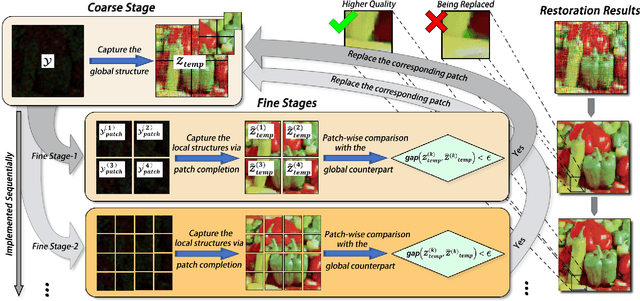
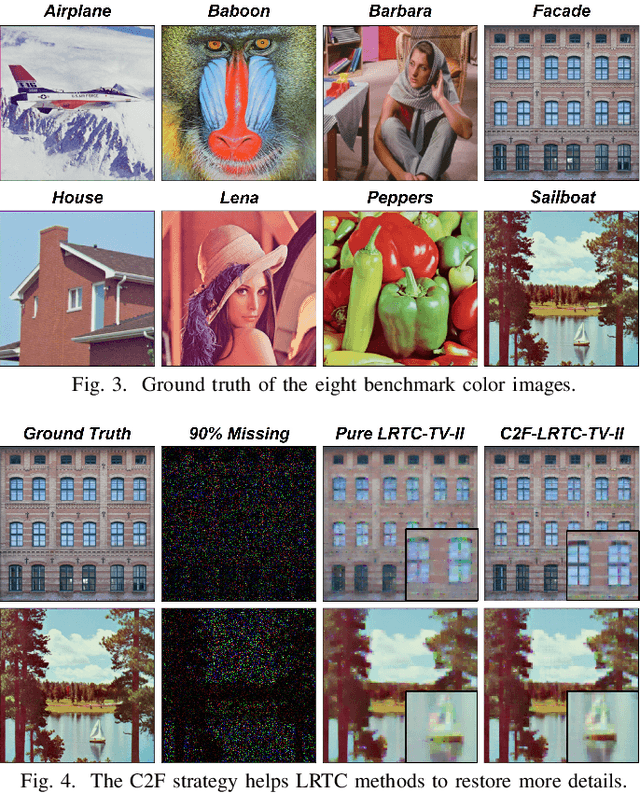
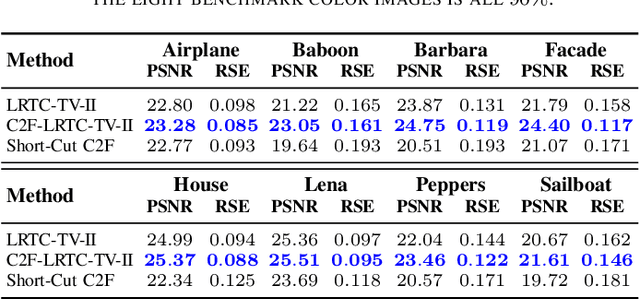
Abstract:Existing low-rank tensor completion (LRTC) approaches aim at restoring a partially observed tensor by imposing a global low-rank constraint on the underlying completed tensor. However, such a global rank assumption suffers the trade-off between restoring the originally details-lacking parts and neglecting the potentially complex objects, making the completion performance unsatisfactory on both sides. To address this problem, we propose a novel and practical strategy for image restoration that restores the partially observed tensor in a coarse-to-fine (C2F) manner, which gets rid of such trade-off by searching proper local ranks for both low- and high-rank parts. Extensive experiments are conducted to demonstrate the superiority of the proposed C2F scheme. The codes are available at: https://github.com/RuiLin0212/C2FLRTC.
A Deep Insight into Measuring Face Image Utility with General and Face-specific Image Quality Metrics
Oct 22, 2021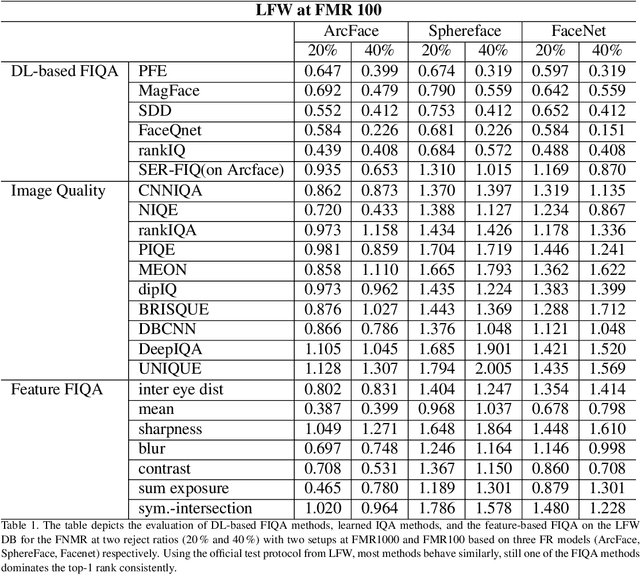
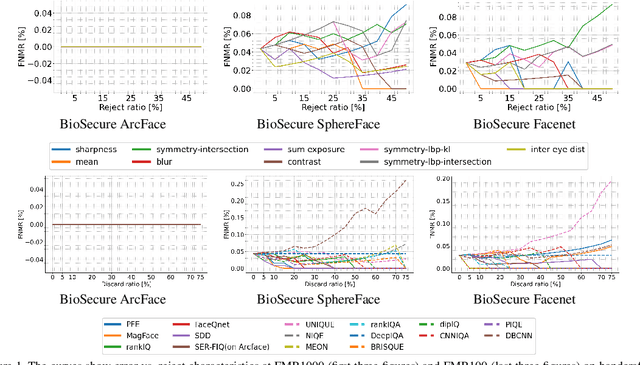
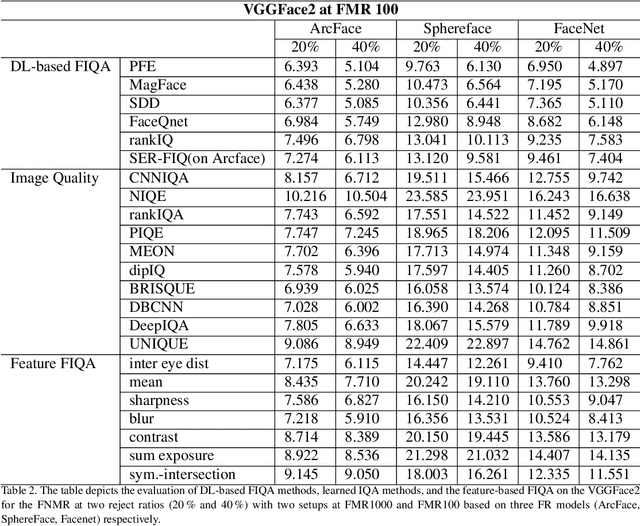
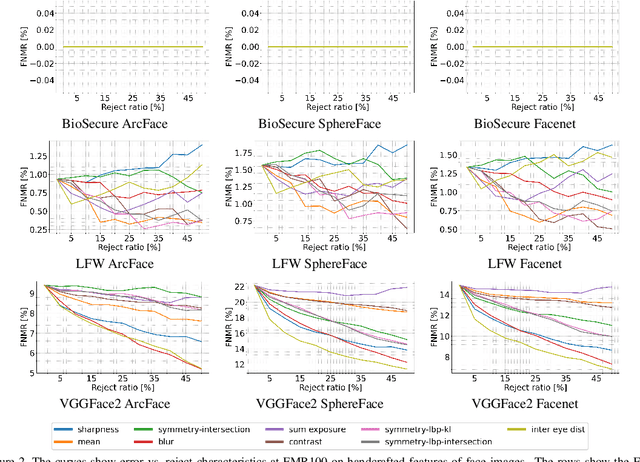
Abstract:Quality scores provide a measure to evaluate the utility of biometric samples for biometric recognition. Biometric recognition systems require high-quality samples to achieve optimal performance. This paper focuses on face images and the measurement of face image utility with general and face-specific image quality metrics. While face-specific metrics rely on features of aligned face images, general image quality metrics can be used on the global image and relate to human perceptions. In this paper, we analyze the gap between the general image quality metrics and the face image quality metrics. Our contribution lies in a thorough examination of how different the image quality assessment algorithms relate to the utility for the face recognition task. The results of image quality assessment algorithms are further compared with those of dedicated face image quality assessment algorithms. In total, 25 different quality metrics are evaluated on three face image databases, BioSecure, LFW, and VGGFace2 using three open-source face recognition solutions, SphereFace, ArcFace, and FaceNet. Our results reveal a clear correlation between learned image metrics to face image utility even without being specifically trained as a face utility measure. Individual handcrafted features lack general stability and perform significantly worse than general face-specific quality metrics. We additionally provide a visual insight into the image areas contributing to the quality score of a selected set of quality assessment methods.
 Add to Chrome
Add to Chrome Add to Firefox
Add to Firefox Add to Edge
Add to Edge